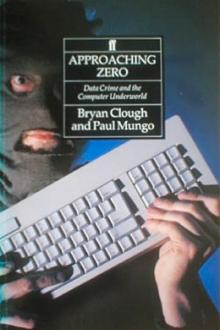The Kidnap Years: David Stout (best inspirational books TXT) 📖

- Author: David Stout
Book online «The Kidnap Years: David Stout (best inspirational books TXT) 📖». Author David Stout
****Reported by the Associated Press on March 29, 1933, and published in numerous newspapers.
*****The Lindbergh crime inherited that title from the 1924 abduction and murder of a Chicago boy by Nathan Leopold and Richard Loeb, two spoiled young men from rich families who wanted to experience the thrill of killing. They were saved from the electric chair by famed lawyer Clarence Darrow and sentenced to life plus ninety-nine years in prison. Loeb was stabbed to death by another inmate in 1936. Leopold was paroled in 1958 and died in 1971.
******The organization is opposed to capital punishment, and its leadership has included people who are outspoken against the death penalty. But I have found the organization’s data to be unfailingly reliable.
*******For more information, see www.deathpenaltyinfo.org.
********Public support for capital punishment in the United States has fluctuated since the Supreme Court restored the death penalty in 1976 after a four-year hiatus. A Pew Research poll taken in June 2018 showed that 54 percent of Americans said they favored capital punishment, while 39 percent were opposed, according to the Death Penalty Information Center. The percentage in favor was up five points from the record-low 49 percent found by Pew Research in 2016. But the long-range trend shows a decline in support for the death penalty since 1996, when support peaked at 78 percent.
*********As a subscriber to the Times, I have access to the newspaper’s microfilm. In every instance in which I cite the Times as a source, I have read the article or articles cited.
CHAPTER ONE
THE ORGANIZATION MAN
J. Edgar Hoover was born in Washington, DC, on New Year’s Day, 1895, the youngest of three children of Dickerson Hoover, who worked for the U.S. Coast and Geodetic Survey, and his wife, Annie. Dickerson Hoover was hospitalized for a time because of mental illness, a taboo subject at the time, and Annie Hoover dominated the household, instilling in her children her own uncompromising ideas of Christian morality and right and wrong.
Young Edgar’s first job was as a messenger boy in the Library of Congress. Soon, he was promoted to cataloger, then to clerk, a position in which he mastered the Dewey decimal system, which later became the basis for the filing system of the agency he would rule.
Attending classes at night, he earned his law degree from George Washington University in the capital and passed the bar exam. On July 26, 1917, when he was twenty-two, he became a clerk in the DOJ’s Bureau of Investigation.* One of his initial tasks was assembling a card file on suspected radicals and Bolsheviks.
Fears of these shadowy and threatening people were heightened on June 2, 1919, when a bomb exploded in front of the Washington home of the U.S. attorney general, A. Mitchell Palmer, demolishing the front of the house and rattling windows for many blocks around. The only casualty was the bomber himself, over whose remains Palmer’s neighbor, Assistant Navy Secretary Franklin D. Roosevelt, had to step as he rushed to make sure Palmer was unhurt.
The incident helped to spur the attorney general’s “Palmer raids,” in which federal agents, acting with no regard for constitutional rights, arrested, harassed, and even deported people who were deemed radical, subversive, or…well…not sufficiently American.
In his new job in the Bureau of Investigation, Hoover impressed those around him by assembling a file of some 450,000 such people. He also impressed with his utterly serious demeanor and his impeccable wardrobe. He seemed marked for bigger things. His chance came with the 1923 death of President Warren G. Harding, under whose lax administration the Bureau of Investigation had been a haven for political hacks.
In fairness to Harding, the bureau’s sorry state predated his lamentable tenure. Founded in 1908 during the presidency of Theodore Roosevelt, the bureau was supposed to be the DOJ’s main weapon for combatting crimes that threatened national security so that the department would not have to “borrow” investigators from other agencies, like the Secret Service.** But the bureau quickly became a swamp of incompetence as its “investigators” devoted themselves to crimes on Indian reservations and other obscure cases.
Roosevelt, who had been police commissioner of New York City for two years in the 1890s where he was frustrated by the corruption that permeated the force, wanted his attorney general, Charles Bonaparte, to improve the bureau.*** But cronyism persisted, either because Bonaparte wasn’t strict enough or the culture was too deep-rooted or both.
Perhaps a hard-nosed outsider was needed.
Harlan Fiske Stone, who became attorney general under President Calvin Coolidge in 1924, was determined to clean up the bureau. Commerce Secretary Herbert Hoover, a scandal-free holdover from the Harding administration, recommended J. Edgar Hoover (no relation) as “a lawyer of uncommon ability and character.”11
Edgar was just twenty-nine. He was a bachelor (and would remain one for life) and was thus undistracted by problems at home. In short, he seemed perfect for the job, but he said he would take it only if it could be free of political influence and if he, as director, had power over hiring, firing, and promotions.
Stone agreed. So in 1924, the Federal Bureau of Investigation was reborn. At the time and for several years thereafter, its agents were not authorized to carry firearms, which may have been a good thing, considering how inept some of them were with weapons. Agents were not even authorized at first to make arrests, having to turn that chore over to local police. But Hoover envisioned larger roles for himself and his men (almost always white men), whose ranks he wanted to fill with lawyers and accountants.
For someone who never ran for public





Comments (0)